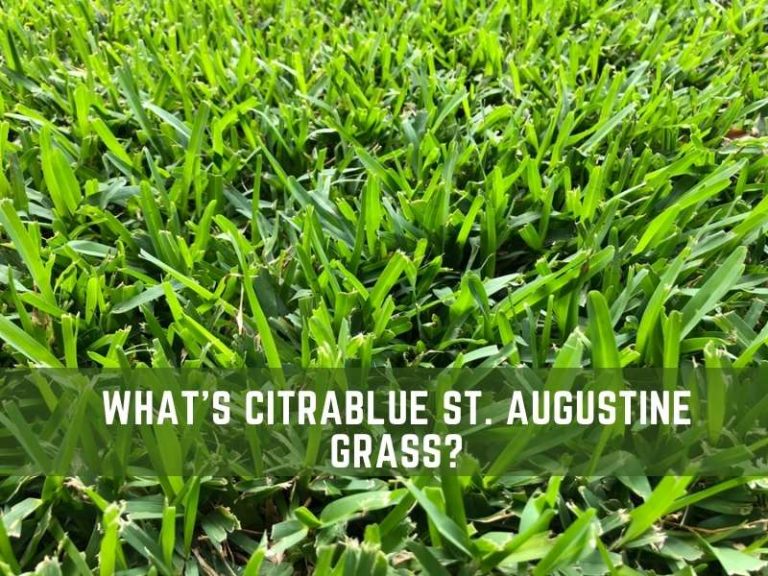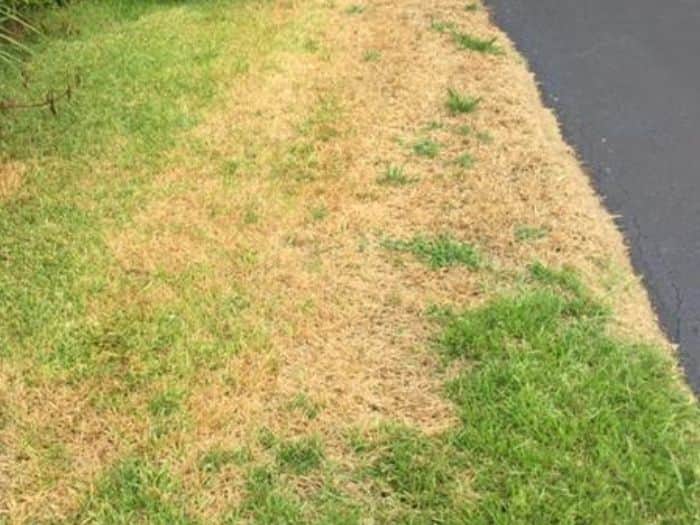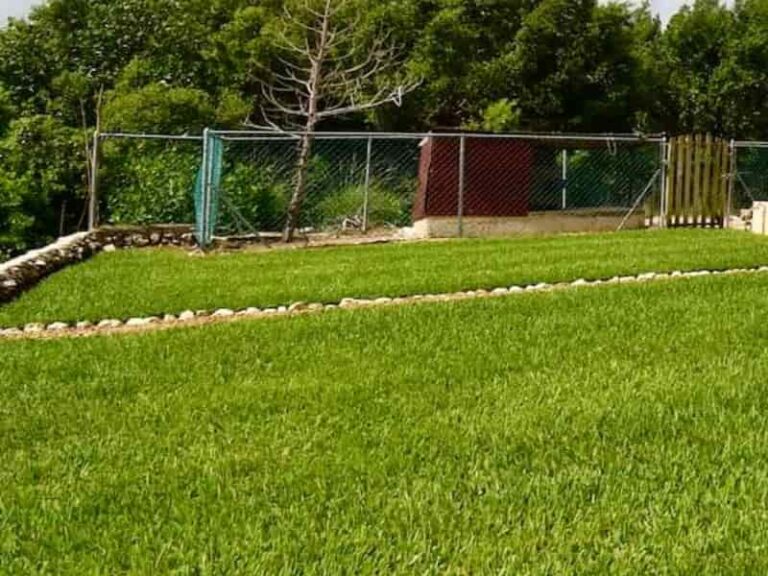Types of St. Augustine Grass: Different Varieties + Identification
Looking to grow St. Augustine grass on your lawn but are unsure which of its cultivars to go for? Wondering whether the conditions of your lawn or region should affect your choice?
St. Augustine grass is a warm-season turfgrass that’s popular due to its tendency to form thick turfs. It spreads laterally by way of above-ground stolons to form dense sod that’s visually attractive. Native St. Augustine grass has a dark-green shade, but the coloring of recent cultivars may vary slightly from this. In this article, we go through the various types of St. Augustine grass and their distinctive features.
How many types of St. Augustine grass are there?
There are up to 11 cultivars of St. Augustine grass. While these St. Augustine cultivars share some common characteristics such as dense growth, they also differ in multiple ways. For instance- some are shade-tolerant while some are not; and some are more vulnerable to pet infestations compared to others.
In the next section, we’ll discuss some of the most common varieties of St. Augustine grass for lawns and highlight some of the lesser-known varieties.
Different Varieties of St. Augustine Grass
Floratam
Floratam is arguably the most popular St. Augustine grass variety for home lawns. You can identify this grass variety by it coarse-textured leaf blades and fast-spreading growth pattern. One thing that makes Floratam St. Augustine grass so great for home lawns is the fact that it has minimal maintenance requirements. What’s more, it’s resistant to common lawn diseases and pests such as SAD virus, brown patch fungus and chinch bugs.
Another key factor that makes Floratam so popular is its superior drought-tolerance, as it will retain its lush green color even if it doesn’t get sufficient water. Nevertheless, Floratam has poor shade-tolerance and is best planted in areas with direct sunlight access. Typically, a Floratam turf needs at least six hours of daily sunlight exposure to grow and thrive. Finally, you can expect this turfgrass variety to go dormant during winter, as St. Augustine is a warm-season turfgrass species.
Palmetto
Palmetto St. Augustine grass is a native St. Augustine variety that can be easily identified by its dwarf appearance and smooth-textured leaf blades. It has an emerald-green color that’s visually captivating, hence its popularity for use on home lawns. Palmetto blades are also slightly narrower than other St. Augustine cultivars.
Many sod farms and landscaping businesses love selling Palmetto St. Augustine sod due to its ability to thrive in different types of soil and climate conditions- hence suiting a larger pool of buyers. Other characteristics that make this turfgrass appealing to homeowners include its superior cold and shade tolerance, vis-à-vis other St. Augustine cultivars. Palmetto’s shade-tolerance means it can thrive in a lawn that has taller trees growing on it. Finally, Palmetto is also naturally resistant to thatch buildup and cinch bugs.
Despite all its advantages over other St. Augustine cultivars, Palmetto still has its downside, as it’s highly vulnerable to brown patch fungi. Also, it takes longer to recover compared to other types of St. Augustine grass, hence your lawn will take longer to recover from fungal infestations or to resume growth after the winter dormancy period.
Seville
Seville is a St. Augustine cultivar that’s beloved by homeowners for its ability to retain its beautiful color through the fall season. You can identify Seville by way of its blue-green hue and dwarf stature. Its leaf blades also have a noticeably finer texture compared to Floratam St. Augustine. Just like Palmetto, Seville is another St. Augustine variety that will thrive whether growing under shaded conditions or in full sunlight. It’s also salt-tolerant and can be successfully grown in lawns with acidic soil or alkaline soil. Finally, once root establishment takes place, this turfgrass variety requires very minimal maintenance apart from some regular mowing and watering.
Bitter-Blue
Bitter-Blue is a St. Augustine grass variety that’s characterized by its dark-blue- green hue, fine leaf texture, and dense growth pattern. It’s great for partially-shaded lawns due to its good shade tolerance; while its moderate cold-tolerance enables it to stay green deep into fall. Bitter-blue is usually recommended for homeowners who are unable to maintain a regular maintenance schedule, as its slow growth rate means that it doesn’t require frequent mowing.
However, this turfgrass also has its disadvantages, such as being vulnerable to common lawn pests like cinch bugs. Bitter-blue also doesn’t react well to some herbicides like Atrazine, which can lead to harming of the desirable turfgrass during weed control.
Sapphire
Aesthetic-wise, Sapphire is one of the best St. Augustine cultivars to grow on your lawn, as its blue-green color will instantly enhance your curb appeal. Sapphire has the fastest lateral growth rate amongst all St. Augustine grass cultivars, a characteristic that enables it to recover faster from damage. It can also withstand drought and heat; and thrives even in hot, sub-tropical climates.
The problem with Sapphire St. Augustine is that it’s very vulnerable to fungal infestations. As such, you may be forced to re-sod frequently whenever turf damage occurs due to fungi. This makes this type of turf expensive to maintain in the long run.
Apart from the common St. Augustine grass varieties mentioned above, other cultivars of this warm-season turfgrass species include the following:
- Mercedes St. Augustine grass- this cultivar is able to recover quickly from damage due to its fast lateral growth by way of both stolons and rhizomes. It’s also wear-resistant.
- Evergreen St. Augustine grass- this cultivar is characterized by its dark-green hue and relatively narrow leaf blades. It’s also known for its good color retention during the colder months, hence the name ‘Evergreen’.
- Delmar St. Augustine grass- you can identify this variety by its distinctive emerald-green hue and coarse leaf blade texture. Delmar turfs typically exhibit moderate wear and disease resistance.
- Raleigh St. Augustine grass- this is a cold hardy St. Augustine cultivar, characterized by its pale green hue and coarse leaf blade texture.
- Delta Shade St. Augustine grass- this cultivar also has great shade tolerance despite not being among the dwarf St. Augustine varieties.
- Floralawn St. Augustine grass- has low cold and shade tolerance and is best grown in Southern lawns where it’s warmer for most of the year.
What is the most shade tolerant variety?
Of all St. Augustine grass cultivars, the ones that exhibit the best shade-tolerance include Seville, Palmetto, and Sapphire. These shade-tolerant varieties typically require between 4-6 hours of full sunlight exposure per day, compared to other varieties like Floratam that typically need about eight hours of daily sunlight exposure.
However, even with a highly shade-tolerant cultivar like Seville growing on your lawn, you can still enhance its chances of thriving by adopting ‘shady practices’. These may include avoiding foot traffic in areas where the shaded grass is growing, and mowing at the lowest possible mowing height to leave more leaf blade surface area for increased sunlight absorption.
What is the best type of St Augustine grass?
The best type of St. Augustine grass for your lawn will depend on various factors such as soil conditions, the climate in your region, and whether there are tall trees growing on your lawn or not. For instance, for southern lawns, drought and heat tolerant varieties like sapphire may be the best option.
On the other hand, cold-tolerant varieties like Raleigh St. Augustine grass are the best for northern lawns where temperatures can drop to extreme levels.
Whichever type of St. Augustine grass you’re growing on your lawn, remember that your chances of ending up with a beautiful, thick, and healthy lawn will be enhanced if you attend to the maintenance requirements for that particular cultivar.
These may include regular watering, mowing, lawn aeration, and weed control measures to prevent competition for soil nutrients.




